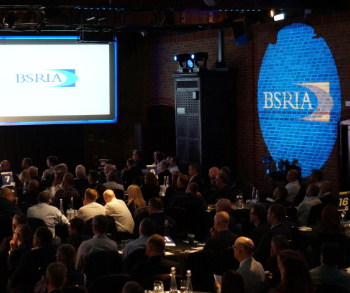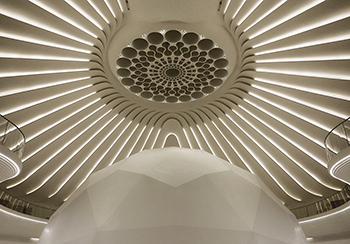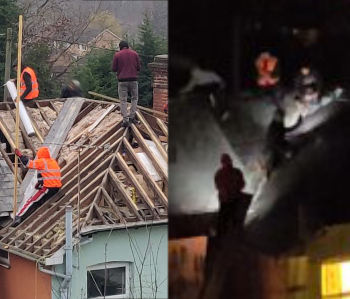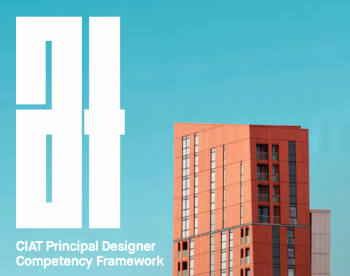Designing to reduce the chemical, biological and radiological vulnerability of new buildings (IP 7/15)
BRE (Building Research Establishment) is an independent, research-based consultancy, testing and training organisation, operating in the built environment and associated industries.
On 7 September 2015, BRE published Designing to reduce the chemical, biological and radiological vulnerability of new buildings (IP 7/15) by Vina Kukadia and Alan Abela.
If there were a chemical, biological or radiological (CBR) release, it could have a major impact on buildings, their occupants and business operations and services. However, buildings are generally not designed to offer protection against CBR events.
Once built, retrofitting to mitigate against CBR impacts is time-consuming, disruptive and expensive. It is important therefore to consider and incorporate means of reducing the impact of CBR releases as an part of the initial design, planning and construction process.
This 12-page Information Paper considers ventilation and infiltration as the main potential routes for the ingress of contaminants into buildings and provides an overview of existing design standards, methods and practices that may be implemented at the design stage without adding significantly to costs.
Designing for CBR can:
- Improve the security and protection for occupants.
- Enhance indoor environments as a result of less environmental pollution ingress.
- Offer commercial advantages to developers from providing a high-quality building with an advanced level of security and protection.
- Shorten recovery phase following a CBR release, which may otherwise be extensive.
- Offer savings in costs for remediation.
The contents of the paper include:
- Introduction.
- Ingress of contaminants into buildings.
- Building air permeability (airtightness).
- Ventilation.
- Physical security of plant and equipment.
- Fire safety and CBR incidents.
- Building zoning.
- Shelter-in-place and incident response strategies.
- Building information modelling.
- Summary.
- References and further reading.
- Appendix: Summary of strategies to reduce the impact of CBR releases on buildings.
[edit] Related articles on Designing Buildings Wiki
- BRE articles on Designing Buildings Wiki.
- BRE Buzz articles on Designing Buildings Wiki.
- Building Research Establishment.
- COSHH.
- Deleterious materials.
- Environmental health.
- Hazardous substances.
- Indoor air quality.
- Methane and other gasses from the ground.
- Pollution.
- Radon.
- Solid and liquid contaminants risk assessments.
Featured articles and news
Twas the site before Christmas...
A rhyme for the industry and a thankyou to our supporters.
Plumbing and heating systems in schools
New apprentice pay rates coming into effect in the new year
Addressing the impact of recent national minimum wage changes.
EBSSA support for the new industry competence structure
The Engineering and Building Services Skills Authority, in working group 2.
Notes from BSRIA Sustainable Futures briefing
From carbon down to the all important customer: Redefining Retrofit for Net Zero Living.
Principal Designer: A New Opportunity for Architects
ACA launches a Principal Designer Register for architects.
A new government plan for housing and nature recovery
Exploring a new housing and infrastructure nature recovery framework.
Leveraging technology to enhance prospects for students
A case study on the significance of the Autodesk Revit certification.
Fundamental Review of Building Regulations Guidance
Announced during commons debate on the Grenfell Inquiry Phase 2 report.
CIAT responds to the updated National Planning Policy Framework
With key changes in the revised NPPF outlined.
Councils and communities highlighted for delivery of common-sense housing in planning overhaul
As government follows up with mandatory housing targets.
CIOB photographic competition final images revealed
Art of Building produces stunning images for another year.
HSE prosecutes company for putting workers at risk
Roofing company fined and its director sentenced.
Strategic restructure to transform industry competence
EBSSA becomes part of a new industry competence structure.
Major overhaul of planning committees proposed by government
Planning decisions set to be fast-tracked to tackle the housing crisis.
Industry Competence Steering Group restructure
ICSG transitions to the Industry Competence Committee (ICC) under the Building Safety Regulator (BSR).
Principal Contractor Competency Certification Scheme
CIOB PCCCS competence framework for Principal Contractors.
The CIAT Principal Designer register
Issues explained via a series of FAQs.


























